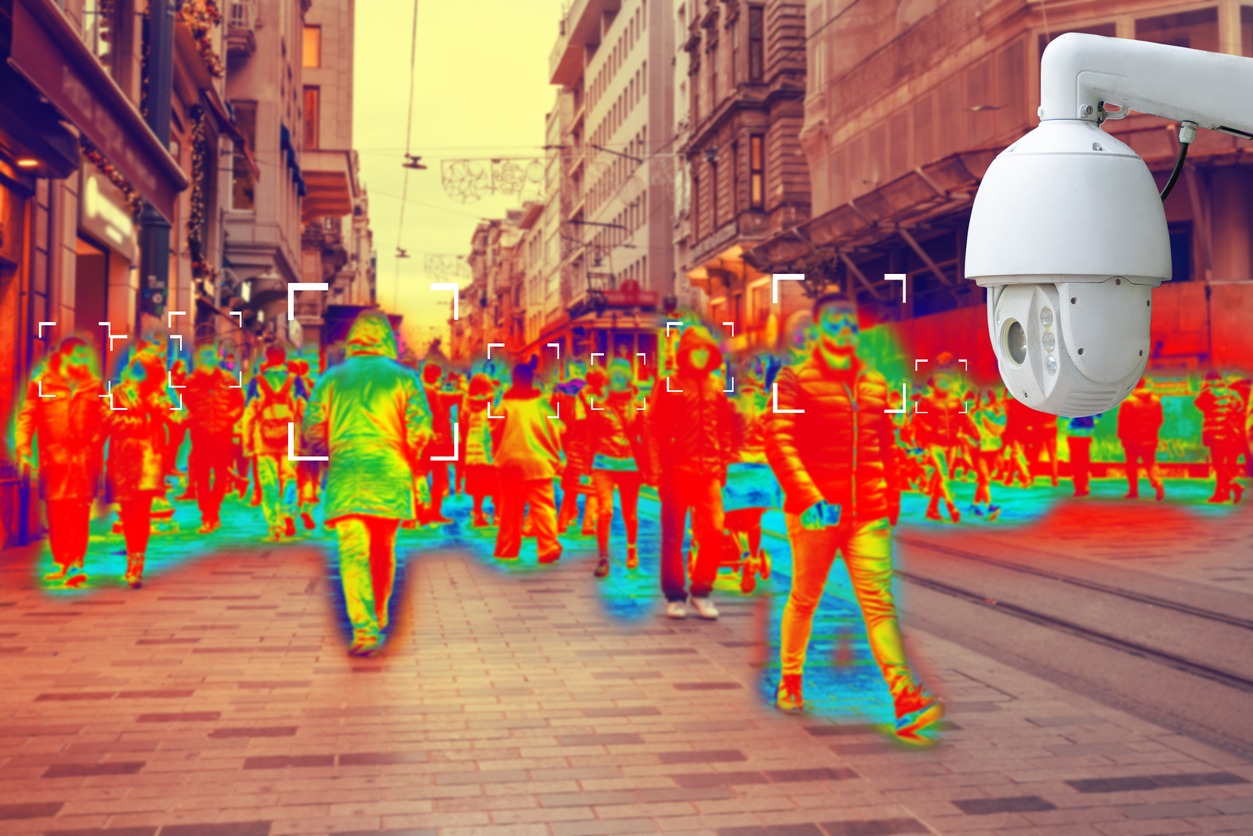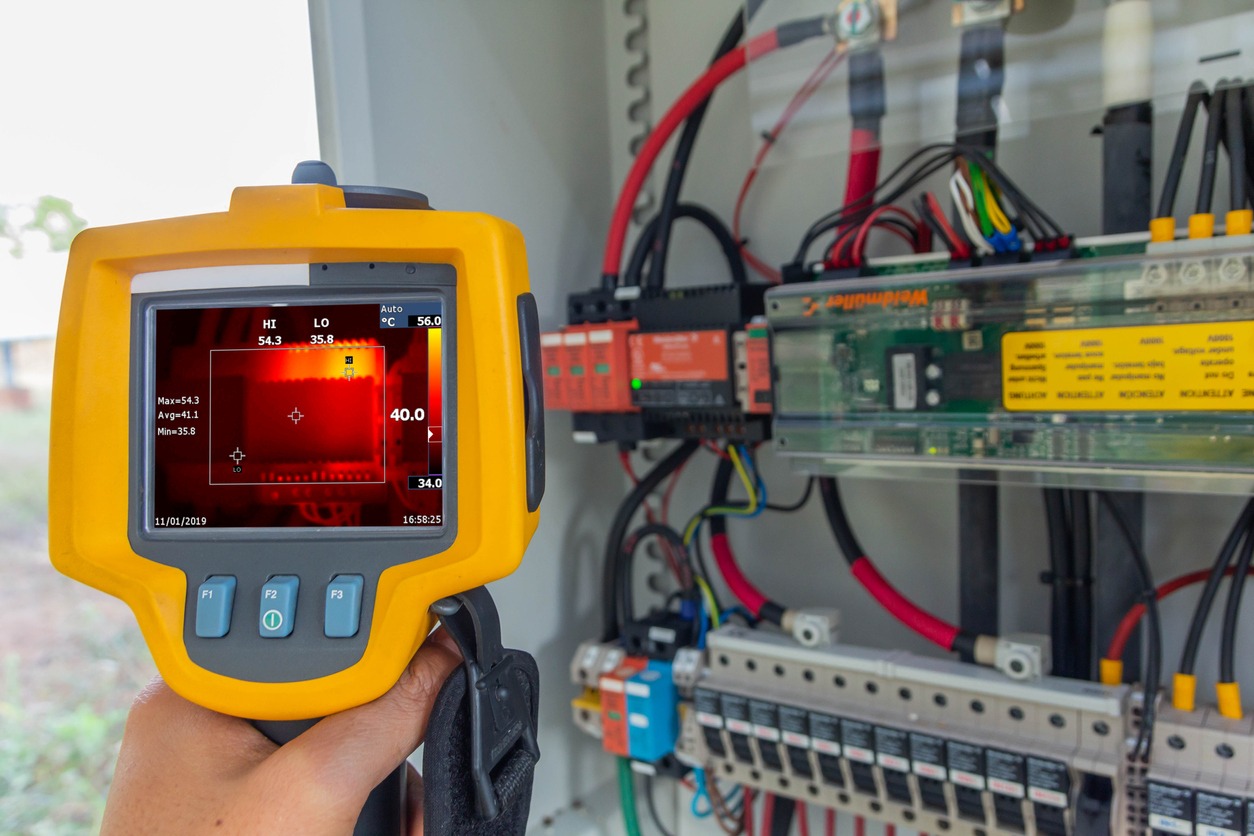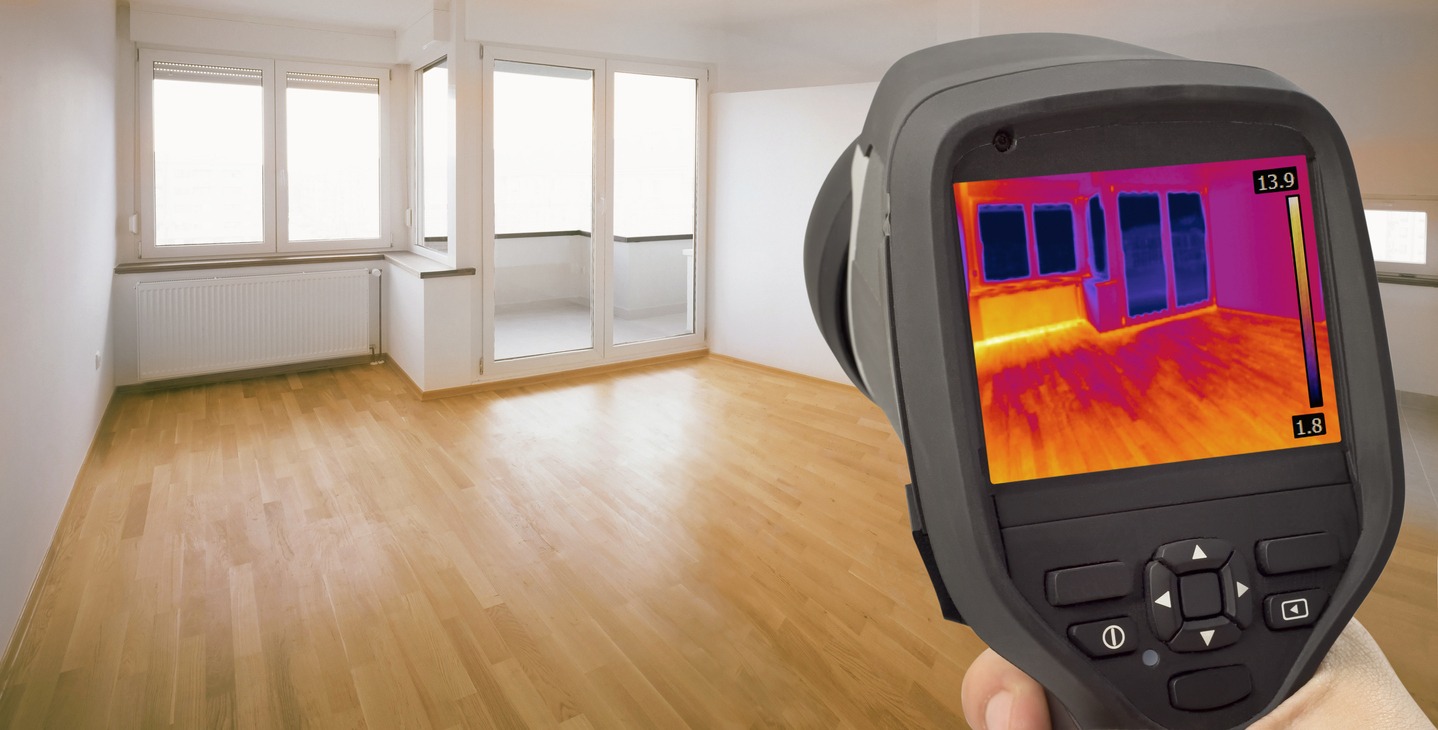Thermal cameras detect and measure the infrared radiations emitted by various objects and display it as their heat signature on its screen. These thermal imaging devices produce detailed and accurate thermal images that you can use to identify objects in the dark, track temperature changes, and provide 24/7 monitoring, among many other uses.
If you’re in the market for a thermal camera, choosing one from the dozens of options can be overwhelming without any homework. This guide outlines the basics of what a thermal camera is, the different types of cameras available, and the potential applications of thermal imaging technology. Whether it is a thermal camera for home security that you are after, or want one for professional use, this guide will give you the starting point you need to make an informed decision. So, let’s get started!
What Is A Thermal Camera and How Does it Work?
A thermal camera is an advanced imaging device that can capture and display infrared radiation falling within its field of view. It is equipped with a thermal sensor that detects the infrared energy radiating from an object’s surface across different temperature ranges.
The sensor converts the thermal energy data into an electrical signal and displays it as an image on a built-in or external. It also provides a temperature reading for each pixel that is imaged. This enables you to visualize the temperature-based view of the environment which would otherwise be invisible or too difficult to measure.
Types Of Thermal Cameras
Although the basic principle behind their working is the same, thermal cameras can be classified into two different categories with the two basic categories being handheld thermal cameras and fixed thermal cameras (other categories include medical thermal cameras, automotive thermal cameras and drones equipped with thermal cameras).
Handheld Thermal Cameras
Handheld thermal cameras are compact and portable devices that you can use to capture thermal images of various objects. They are essentially point and shoot devices equipped with a sensor to detect heat signatures and usually come with a built-in screen to display the thermal image.
Due to their portability and affordability, handheld thermal cameras are a popular choice. The controls are usually intuitive and easy-to-master, making them well-suited for operators with limited experience using thermal imaging technology. They are suitable for homeowners looking to keep an eye out on things, as well as for professionals who deal with hot objects on a regular basis.
Fixed Thermal Cameras
Unlike their portable counterparts, fixed thermal cameras are automated systems designed to monitor stationary targets. Depending upon the application, a fixed thermal camera can continuously record and help control the temperature of the target. These are typically used for long-term surveillance or monitoring applications such as security, wildlife monitoring, automotive repair, and agriculture management.
They are more expensive than handheld cameras, but offer higher sensitivity and resolution levels than their handheld counterparts. You may also need some training to effectively operate a fixed thermal camera as these often include specialized features or settings that require more familiarity with the thermal imaging technology.
Thermal Camera Applications
Thermal cameras became a common tool for firefighters in the 1990s. The technology assisted them in finding people in rooms filled with smoke or trapped under things, as well as being prepared for hot spots that can hide in buildings. They were quite expensive then, but are now much more affordable. Today, they are widely used for various purposes including:
Security
Thermal cameras are gaining popularity as an effective security tool. They can detect infrared radiation emitted by people and objects in darkness or adverse weather conditions like fog or smoke. This makes them ideal for perimeter surveillance as well as detecting suspicious activity at public places. They are commonly used at airports, shopping malls, and parking lots where people congregate or traffic passes through frequently.
Search And Rescue
For many years, thermal cameras have been widely used by professional search and rescue teams. Their ability to detect warm objects over large distances enables them to signal out victims buried in rubble or snow drifts after natural disasters or avalanches. Police departments, firefighters and first responders also use these to obtain accurate temperature readings over large distances or in hazardous environments to help ensure safety during response operations.
Industrial Monitoring
Fixed thermal cameras, in particular, are often used to monitor temperatures in manufacturing plants or other industrial environments where precision and accuracy is important. They help prevent fires or explosions caused by heated machinery parts by monitoring their temperature so they don’t elevate beyond safe limits. They perform remote surveillance by mounting on the ceiling above the equipment. This allows personnel to remain safe from potential threats posed by these on-site conditions.
Wildlife
Thermal cameras are also used by researchers studying animal behavior, usually in remote areas. With their thermal imaging ability, these devices easily detect animals moving through vegetation at night even in total darkness. And they do so without disturbing the animal species or their natural habitats.
The data collected this way provides valuable insights into endangered species or migratory patterns. It can help conservationists manage habitats for various species across wide geographical regions in a better way.
Medical Imaging
Thermal imaging has recently been applied for medical diagnosis purposes. It has proved useful in detecting subtle changes in vascular patterns associated with inflammation due to infection or injury not visible through conventional imaging methods such as X-rays or ultrasounds. These cameras can help doctors diagnose illnesses quickly without having to resort to invasive procedures such as biopsies, which have high risks associated with them.
Building Inspections
Thermal cameras are also commonly used by building inspectors during inspections. The thermal images these cameras generate can provide invaluable information on potential problem areas that may require attention before they lead to more serious consequences down the line.
They can easily identify moisture intrusion to prevent costly structural damage and can also point out air leaks which helps manage energy costs in a better way.
Automotive
Thermal cameras have become a commonplace in automotive repair shops. With their ability to identify heating issues in engines, these devices help diagnose a fault without having to disassemble complex components. They help mechanics identify whether components need replacing before performing additional work, saving both time and money.
Agriculture
Thermal imaging has become increasingly popular among farmers looking for ways to increase yields through better crop management. Infrared radiation emitted from plants provides helpful information regarding soil health, crop development, water stress, pest control, weed growth, soil composition, disease detection, etc. This helps farmers make smarter decisions about things like irrigation schedules, fertilizer use and pest control techniques.
Things to Consider in A Thermal Camera
When it comes to thermal cameras, the list of features to consider can get pretty technical. It’s important to choose the right camera for the job by considering each aspect or feature separately. Here is a detailed buyer’s guide for choosing the best thermal camera for your requirements:
Thermal Resolution
The resolution of a thermal camera is an important factor to consider when choosing a model for your application. Generally, the higher the resolution of the camera, the more detailed its thermal image. It is important to look at the resolution of both the body and the lens of the camera as these two elements affect how clear and detailed your images come out.
A thermal resolution of 160 x 120 pixels (handheld devices) should suffice for general purpose use. However, in addition to resolution, you also need to consider other factors such as sensor sensitivity and image processing capabilities for satisfactory results.
Field of View
The field of view (FOV) of a thermal camera is the area that the camera can scan. A wider field of view allows you to scan a larger area at once, so you can gather more data in less time. When selecting a thermal camera, it’s important to make sure that its field of view is wide enough to be suitable for your needs. An FoV of 20-30 degrees is considered to be sufficient for general purpose use. But you have to strike the right balance between FoV and thermal resolution, as a wider FoV often results in a lower thermal resolution.
Temperature Range
The temperature range of a thermal camera is its capacity to measure various temperatures. Each thermal imaging camera has its own temperature range within which it can work. If you need to measure very high or very low temperatures, make sure the camera’s range is suitable for your needs. Most DYI and home tasks require a temperature range of-4°F to 752°F (-4°F to 752°F), while industrial devices can have a range of -40°F to 1832°F.
Frame Rate
The frame rate of a thermal camera refers to how often its screen refreshes with new images taken from the sensor array. Higher frame rates mean faster refresh rates and thus more detailed images. It’s important to look at this feature carefully when selecting a thermal camera as it can significantly affect accuracy and clarity of the image. A frame rate between 9Hz to 30Hz (the number of times the screen refreshes in one second) is good enough for general purpose use for tasks such as electrical/HVAC inspections and home inspections.
Thermal Camera Accessories
Thermal cameras are an invaluable tool for those working in the realms of security, inspection, search and rescue, emergency response, and more. But to get the most out of your thermal imager, it’s important to make sure you have the right accessories. Some useful accessories include:
Cases
Cases are perhaps the most obvious accessory you should purchase for your thermal camera. Cases not only provide protection from shocks and water damage while transporting your camera, but they also add storage space for additional batteries, cables and other gear you may need to carry with you on the job.
Batteries
Thermal cameras often require specialized batteries depending on their design. Investing in spare or multiple batteries is essential for those who will be spending extended amounts of time away from an outlet source or running their cameras continuously over long periods of time.
SD Cards
SD cards are vital tools when it comes to storing data collected by your thermal imaging device. High-capacity SD cards are invaluable, allowing you to store all your footage on one memory card instead of constantly transferring data from one device to another or carrying multiple smaller cards with you on the job.
Tripods
Tripods come in many shapes and sizes. They provide much needed stability when taking photos or videos with your thermal cameras in situations when handheld shooting isn’t an option or would be too unstable. Investing in a high-quality tripod is sometimes necessary depending on what type of shots you plan on taking.
Viewfinders
Viewfinders are a necessity for anyone who wants to get the best value out of their thermal cameras. Viewfinders provide clear images that allow you to easily see objects or features that otherwise might be too small or too far away to see with a naked eye. Investing in a good viewfinder is often worth it if you plan on doing precision shooting or want temperature measurement readings accurate down to a tenth of a degree.
Conclusion
Thermal cameras offer a wide range of potential applications, and are becoming increasingly popular in a variety of industries as well as among DYIers and homeowners. From search and rescue to industrial monitoring to automotive repair, thermal cameras are proving to be a versatile and invaluable resource.
With the rise of thermal imaging technology, it is important to be informed about different types of cameras, features, and their potential applications. We hope that this guide has been helpful in providing you with a basic understanding of what thermal imagers are and how they can be used. With the right information, you can find the right thermal imaging camera to meet your specific needs.




